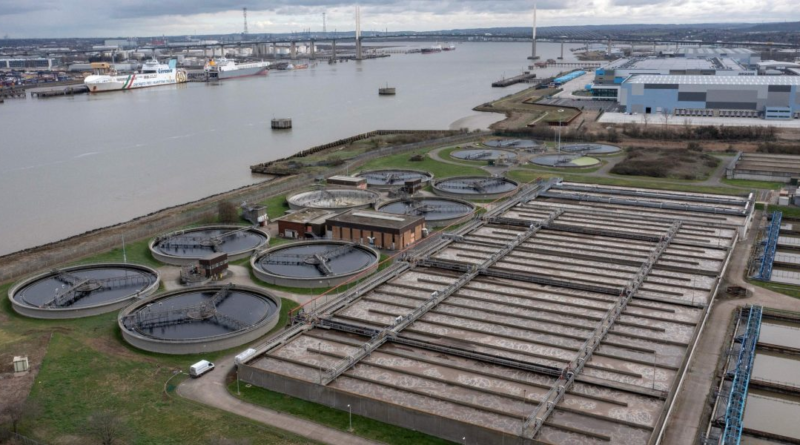The biggest water company in the U.K. is also polluting its rivers. Now, it desperately needs a government rescue to turn things around
Thames Water provides water to nearly a third of Britain’s population—while also causing several sewage spills and pipe leakages daily, equivalent to 250 Olympic-size swimming pools.
Now, the utility may need a government rescue as it struggles to get enough funding to keep it afloat.
The company has come under fire for wasting massive amounts of water and persistent sewage leaks, potentially leading to health consequences for those exposed. Thames Water is hurting from years of underinvestment in its infrastructure and debt of more than $17 billion. On Tuesday, Thames Water CEO Sarah Bentley quit after three years at the helm. While regulators and governments are monitoring the situation, some of the problems Thames Water faces stretch beyond an immediate financial crisis.
What went wrong?
The problem began after Thames Water was privatized in 1989. The company changed hands a few times before it was acquired in 2006 by a consortium of investors led by Australian financial services firm Macquarie Group. The owners drained Thames Water of its finances over several years, paying shareholders big dividends that far exceeded profits in some cases. In 2017, when Macquarie sold its final stake, Thames Water had several billion in debt.
The troubled finances also resulted in poor investment in transporting water and sewage. Some of Thames Water–operated pipes have poured sewage into rivers and harmed the environment, including killing 1,200 fish. In recent years, the company has had to pay millions in fines.
Environmental groups have blamed water companies for failing to invest enough in infrastructure, and further outrage followed when investors and executives were paid dividends, large salaries, and bonuses instead.
When Bentley joined the utility company in 2020, she had a plan to fix leaky pipes and other infrastructure-related troubles. But a report released last week by The Guardian showed the slow progress as Thames Water was seeing the highest leakage rate in five years. And Bentley’s surprise exit adds to the existing fears among investors regarding the future of the company that serves 15 million customers in London and southeast England.
“The foundations of the turnaround that we have laid position the company for future success to improve service for customers and environmental performance,” Bentley said in a statement Tuesday.
But Thames Water isn’t alone in its struggle. Last year, water companies in England alone sent sewage into rivers and the sea 301,091 times, or an average of 825 times daily, government data found. Other companies in the sector also face financial strain owing to high inflation, surging energy costs, and steeper interest rates on debt payments. That led ratings group S&P to give a negative outlook to two-thirds of the U.K.-based water companies it rates, especially since more than half of the debt on average is impacted by inflation, the Financial Times reported. Another company, Southern Water, had to be saved from bankruptcy in 2021 by Macquarie and regulator Ofwat.
What’s the government planning to do now?
The British government is considering ways to save Thames Water if it’s pushed to the brink of collapse, according to Sky News. Ministers and Ofwat are considering placing the company under special administration or temporary nationalization, akin to what the government did when helping energy company Bulb in 2021.
Bentley’s resignation and news of a possible government bailout sent Thames Water’s bonds plunging dramatically. The cost of such a rescue coupled with investments to improve its infrastructure would be passed on to taxpayers, adding to the already high cost of living in the U.K., Investec Bank told Bloomberg.
“There is a lot of work going on behind the scenes with Thames Water to ensure that customers will not be impacted, and there is a process in place if necessary to move us to the next stage,” British environment minister Rebecca Pow said on Wednesday, according to the BBC.
Thames Water said it was working with its shareholders to raise more funding. How much more the company manages to raise and how the government intervenes could determine the future of the utility serving millions every day.
“We have been clear that Thames Water has significant issues to address—their environmental record and leakage performance, for example, are poor. Alongside the turnaround of their operational performance, they need to improve their financial resilience, too,” an Ofwat spokesperson told Fortune. “But that is all in the context of a company that has strong liquidity—it recently received an additional £500 million ($632 million) from shareholders and has £4.4 billion ($5.56 billion) of cash and committed funding.”
The spokesperson added that Ofwat will continue to keep water “companies’ financial resilience under close scrutiny.”
Thames Water did not immediately return Fortune‘s request for comment.


